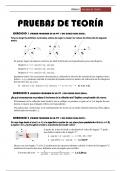Summary
EDT1601 SUMMARY 2021/01
- Institution
- University Of South Africa (Unisa)
- Book
- The Adolescent
A comprehensive Summary which includes a full list of definitions, even additional definitions. Also includes pictures, figures and tables to enhance the learning experience.
[Show more]













